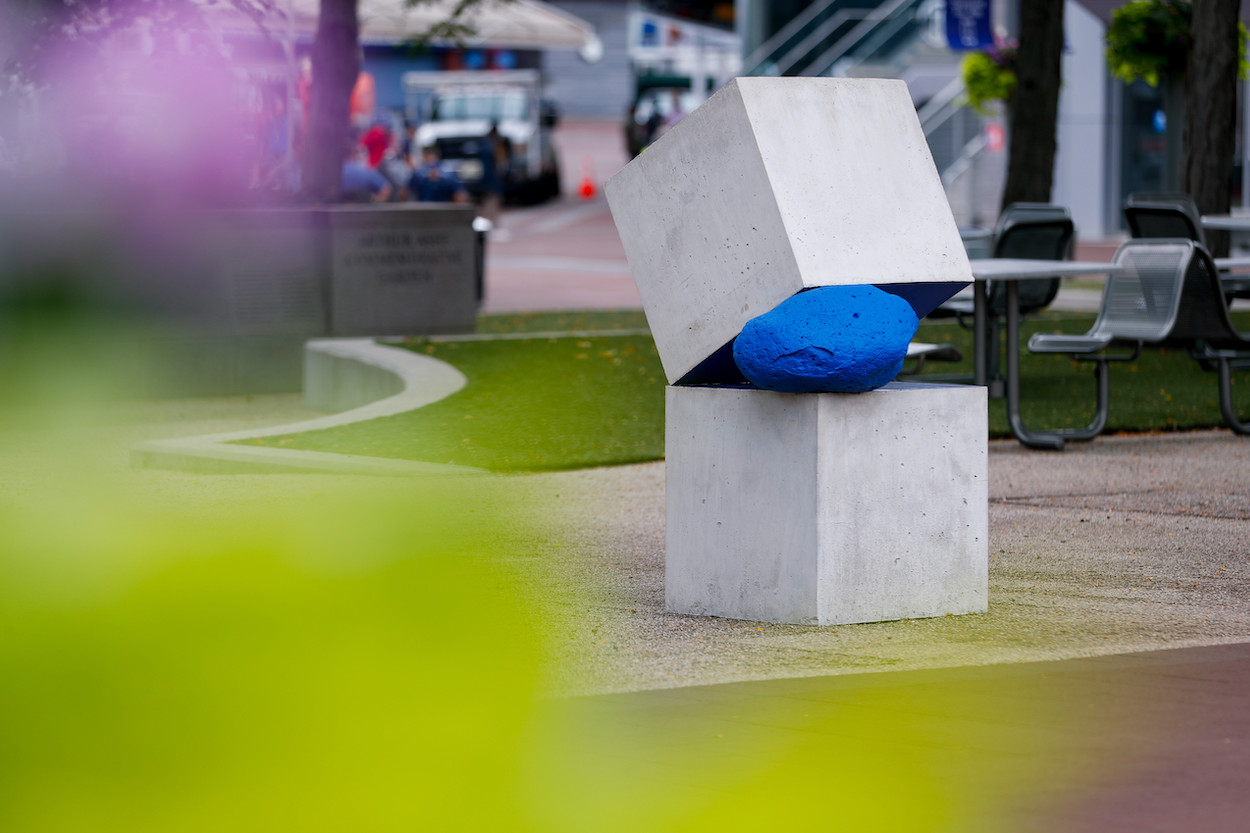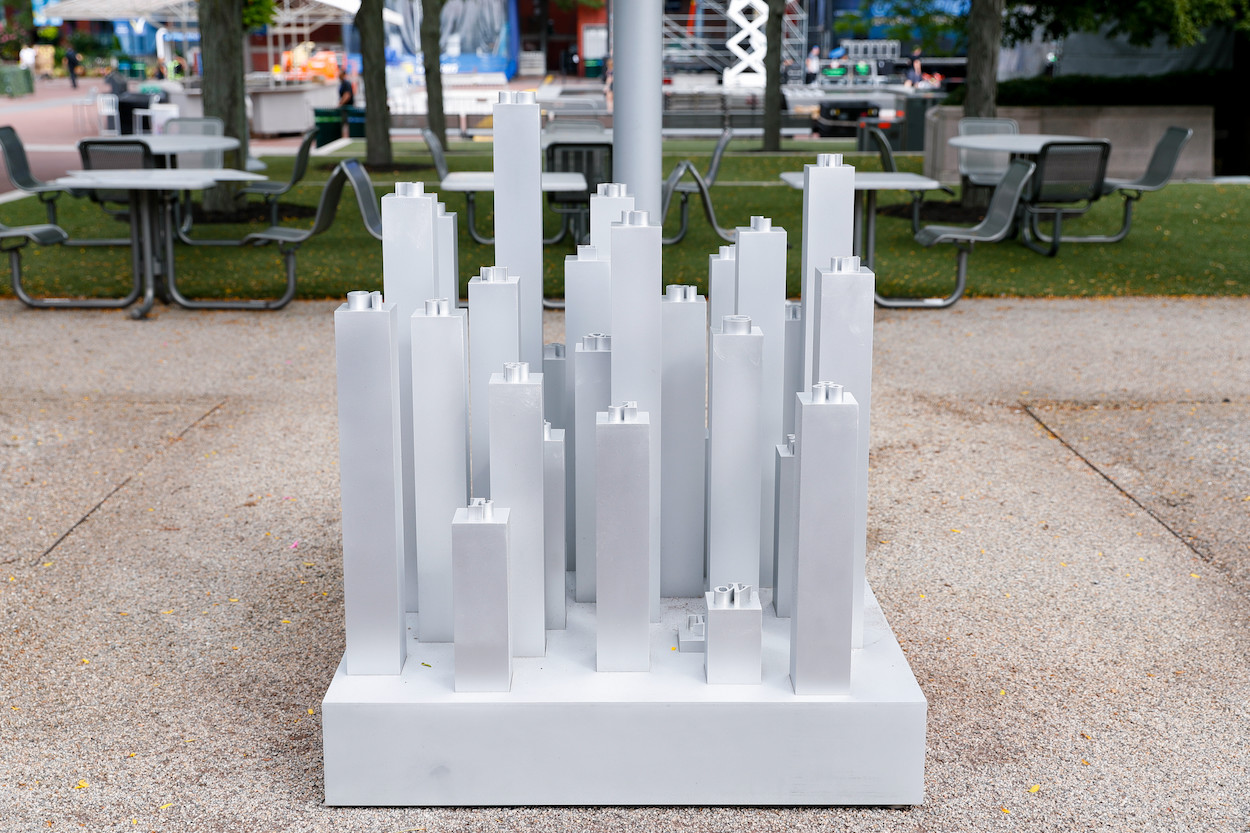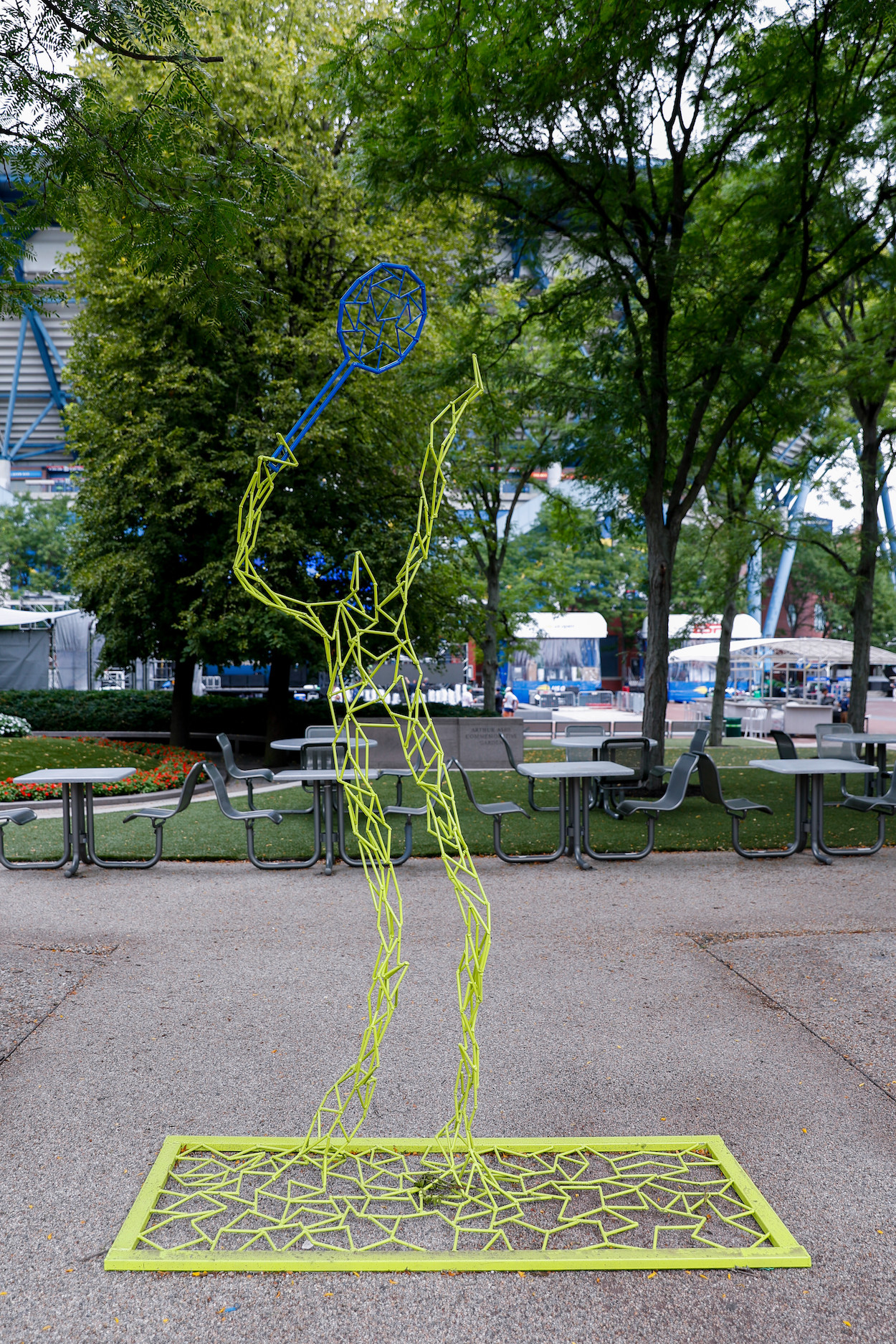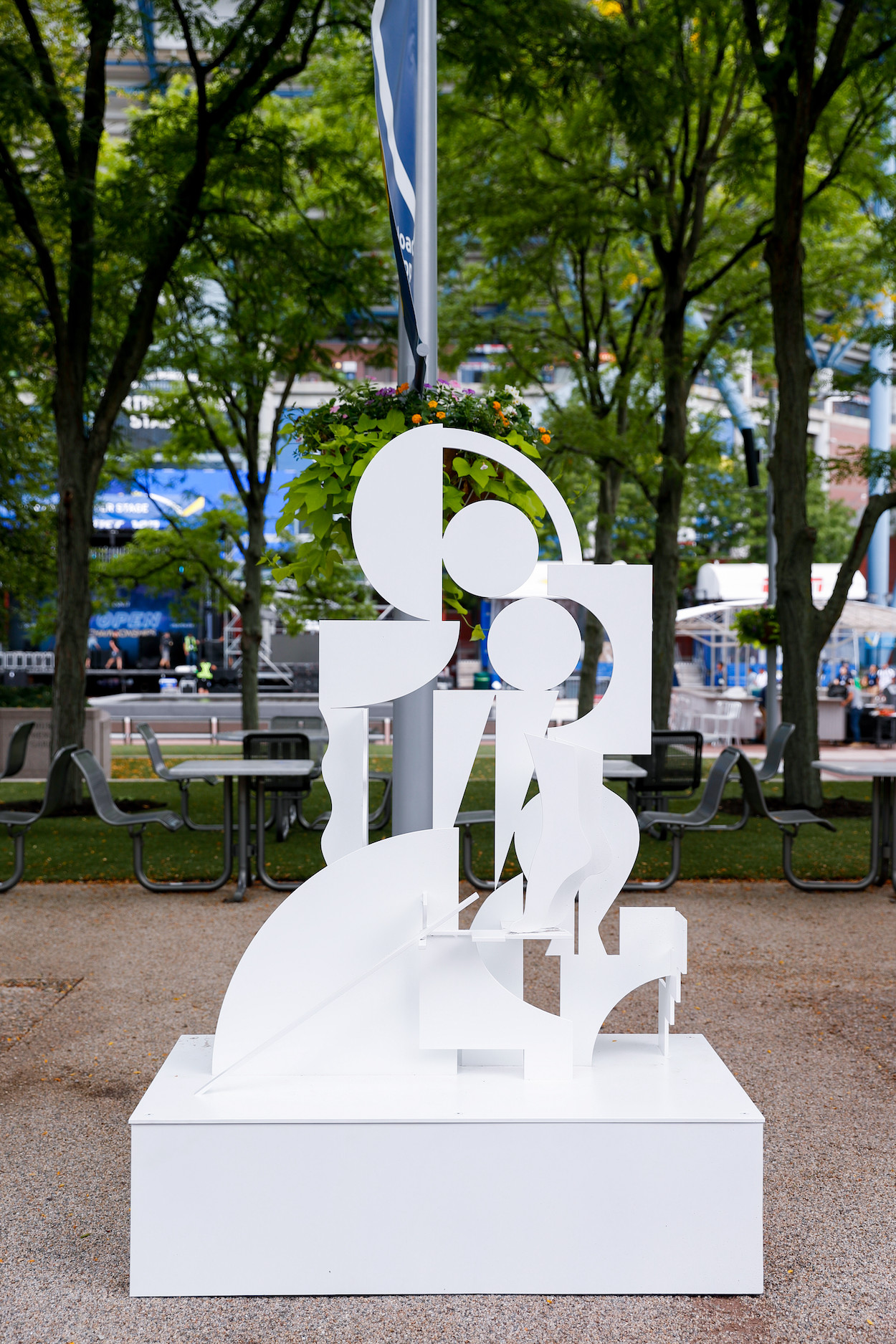Thousands of tennis fans are descending on the USTA Billie Jean King National Tennis Center in Queens, New York, over the next two weeks to attend the U.S. Open. Last night, it seemed like all eyes were on Serena Williams, who sailed past her first-round match in what’s likely to be her final tournament. Widely considered one of the greatest athletes of all time, the 23-time Grand Slam women’s singles champion announced her “evolution away from tennis” in a candid interview and photoshoot that graced the cover of Vogue’s September issue. Given how she and her sister, seven-time Grand Slam winner and design entrepreneur Venus, changed the face of women’s tennis and ushered in a new era of power and athleticism, it’s sure to be a watershed moment—even if it doesn’t culminate in a Serena Slam.
The tournament’s final stretch coincides with this year’s edition of The Armory Show, the annual contemporary art fair taking place at Manhattan’s Javits Center (Sept. 9–11). Drumming up excitement for this year’s edition is Armory Off-Site, a program that sees public artworks from select exhibitors installed across the city. Thanks to a new partnership between the fair and the USTA’s Be Open campaign, which first presented paintings by 18 Black and Indigenous artists at Arthur Ashe Stadium last year, five new sculptures by artists from underrepresented backgrounds are transforming the bustling sports complex into an outdoor sculpture park. Check out the artworks on view below.






